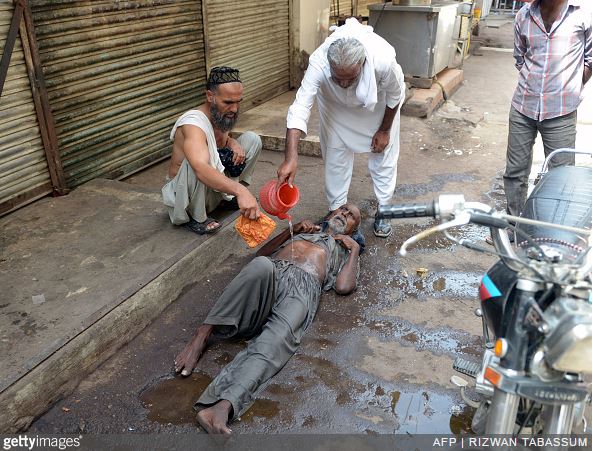
In recent years, excessive heat has caused more deaths globally than all other weather events. A heat wave is a prolonged period of excessive heat, 10 degrees or more above average, often combined with excessive humidity.
Heatwaves are common in many parts of the world, and the heatwave that hit Pakistan between June 18th- 20th, 2015, reached temperatures as high as 120 degrees Fahrenheit (49° Celsius). The heatwave caused the deaths of about 2,000 people from dehydration and heat stroke.
When following local media, travelers are likely to hear weather forecasters use these terms when a heat wave is predicted:
- Excessive Heat Watch– Conditions are favorable for an excessive heat event to meet or exceed local Excessive Heat Warning criteria in the next 24 to 72 hours.
- Excessive Heat Warning – Heat Index values are forecast to meet or exceed locally defined warning criteria for at least two days (daytime highs = 105-110° Fahrenheit (40-43° Celsius).
- Heat Advisory – Heat Index values are forecast to meet locally defined advisory criteria for one to two days (daytime highs = 105-110° Fahrenheit (40-43° Celsius).
Our advice to travelers:
- Stay hydrated by drinking plenty of fluids even if you do not feel thirsty. Avoid drinks with caffeine or alcohol.
- Eat small meals and eat more often.
- Avoid extreme temperature changes.
- Wear loose-fitting, lightweight, clothing made from natural fibers. Avoid dark colors
- Slow down, stay indoors and avoid strenuous exercise during the hottest part of the day
- Listen to local media and weather advisories in the case of a prolonged heat wave. Adhere to any official advice.

Heatstroke is caused by a failure of the thermostat in the brain, which regulates the body temperature. If someone has a high fever or has been exposed to heat for a long time, then their body can become dangerously overheated.Sometimes, people get heatstroke after suffering from heat exhaustion. This occurs when someone is too dehydrated, and they stop sweating, which means their body can’t cool down anymore, so they develop heatstroke.Heatstroke can develop with very little warning, causing unresponsiveness within minutes of someone feeling unwell. Your priority is to cool them down as quickly as possible and get them to hospital.
The symptoms for heatstroke are:
- Headache, dizziness and discomfort
- Restlessness and confusion
- Hot flushed and dry skin
- A fast deterioration in the level of response
- A full bounding pulse
What should you do if you think someone has heatstroke?
- Quickly move them to a cool place and remove their outer clothing but ensure you maintain their dignity.
- Then call for an ambulance.
- Wrap them in a cold wet sheet and keep pouring cold water over it until their temperature falls to at least 100°F(38°C).
- Once their temperature seems to have gone back to normal, replace the wet sheet with a dry sheet.
